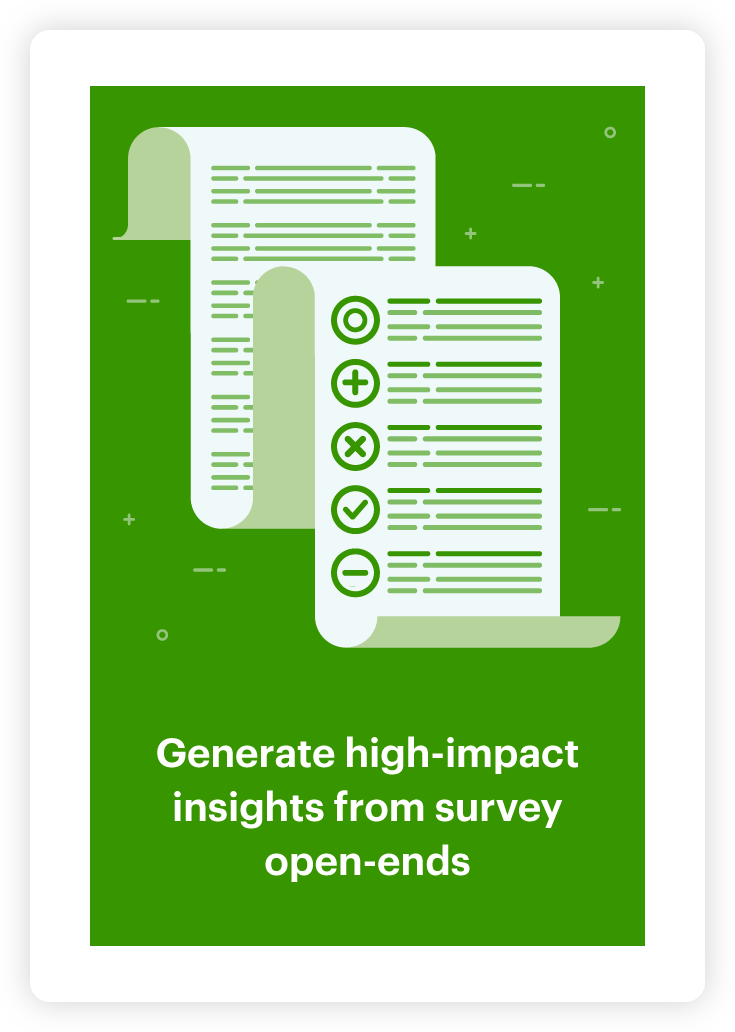How to reduce, reuse, and recycle your text data

Reduce, reuse, recycle – the three R’s have become synonymous with the environmental and sustainability movements. Today, we discuss how they can be applied to your text data to improve your insights process and get more value from your data.
Recently, we wrote a piece analysing survey data about the advertising of feminine hygiene products. This specific piece of analysis compared open-ended questionnaire responses from those who took issue with how these products are portrayed in advertising against those who didn’t. By comparing the language these people used when talking about the subject, we were able to discover some interesting insights – but there is a lot more to it.
In the case of this survey, respondents were asked several other questions including country of residence, age, gender and type of products they favoured. These associated data points represent metadata that enables us to fulfil a host of different briefs and run multiple comparisons without the need to go out and source any new data.
Reduce your effort
Working with us at Relative Insight, you’ll notice that we love to talk about the five stages of a project. One of these stages is sourcing data for each side of your comparison. However, the process of data collection can often be the most tedious part of a project. Helpfully, metadata can be used to repurpose data that already exists within your Data Library. This can help you reduce effort and drive efficiency in your insights process – saving precious time and money.
Reuse your data
In this example, we have all the data that we need to go forth and build additional comparisons. It’s just a matter of going to the Data Library and splitting the survey responses based on geography and age.
Once this is done, we are ready to generate brand new insights.
Geography:
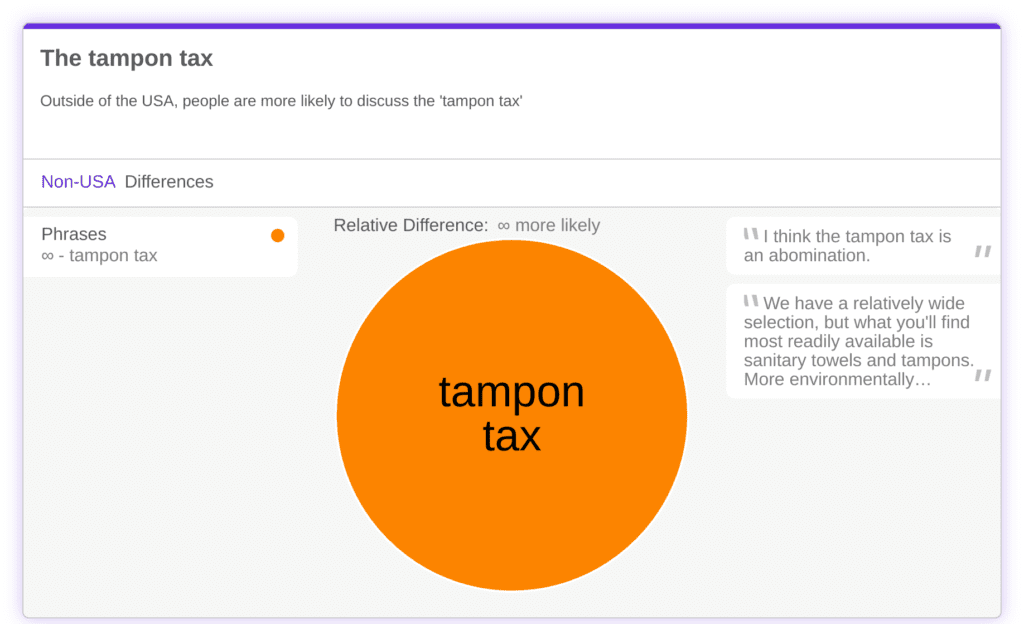

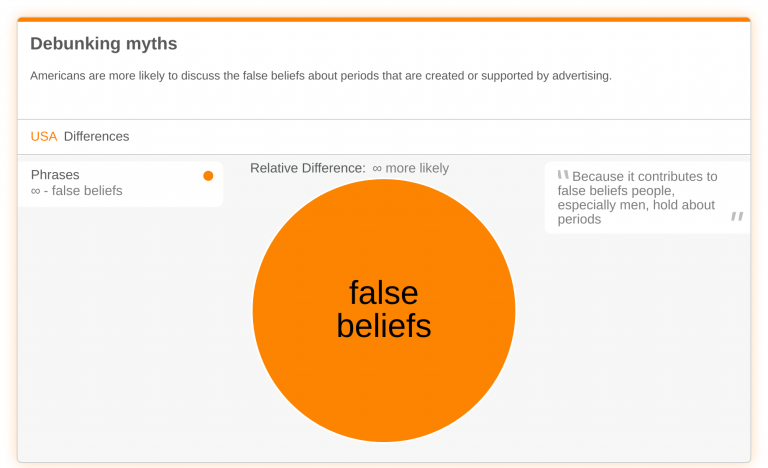

Age:
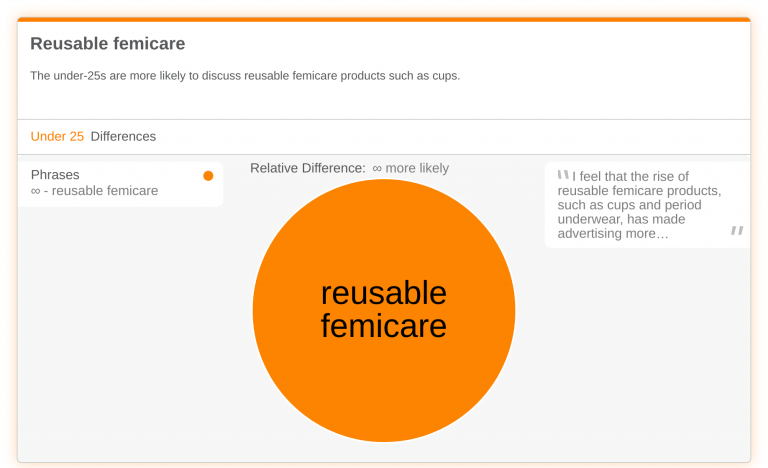

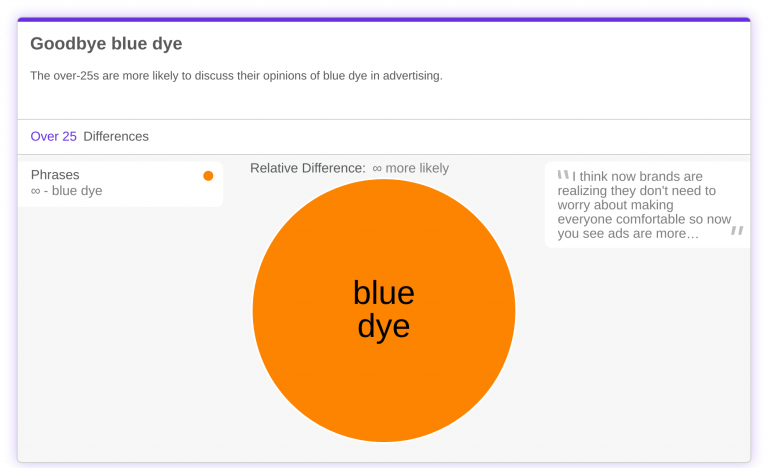

We’ve demonstrated how the same language set can be used in three different ways – our initial use case was a project comparing those who took issue with the adverts against those who didn’t, and now we’ve created geographical and age-based comparisons to go along with it.
Recycle your data
The fun isn’t over yet – you may be able to use your data in a few additional ways! You won’t always have all the metadata points you need to avoid sourcing new data all together, but there may be cases where you can blend existing data in your Data Library with newly sourced data – just as recycled plastic is mixed with new plastic to make bottles.
Revisiting our example, you may be tasked with studying how the discussion of feminine hygiene has evolved over time. In this situation, you could use the existing data to represent the ‘past’ time period and conduct a new survey to gather data for the ‘current’ time period.
So what?
Too often, datasets are analysed with a one-and-done mindset. By unifying data sources and housing them in the convenient Data Library, Relative Insight can help you tap into the full potential of your data.
Relative Insight can analyse data from any language asset. From social media to surveys, podcasts and customer service transcripts – the possibilities are endless! Contact us and we’ll show you how.
